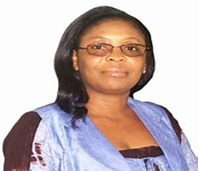Population Growth Dynamics and Climate Change
Chair

Prof Zacharie Tsala Dimbuene
University of Kinshasa
Vice Chair

Mr Diego Iturralde
Statistics South Africa
Members

Prof Winfred Avogo
Illinois State University

Dr Obasanjo Bolarinwa
York St. John University

Dr Philippe Kabore
Université du Québec à Rimouski

Dr Akossiba Elise Chantale Ahovey Houegounou
Ministry of Economy and Finance, Benin

Mr Emmanuel Juakaly
University of Dschang
Description
The Population Growth Dynamics and Climate Change Panel brings together policymakers, stakeholders, experts in population studies, climate science, sustainable development to explore the complex interconnections between demographic trends and climate change, focusing on their impact on societies, economies, and the environment, especially in developing regions.
The panel will assess evidence, analyze the links between demographic trends and climate change, and provide policy recommendations. Its goal is to enhance understanding of how population growth, resource use, urbanization, migration, and environmental change interact, with a focus on vulnerability, adaptation, and mitigation strategies.
The panel aims to:
- Assess and synthesize scientific research on the relationship between population growth and climate change.
- Identify key drivers and trends of population growth, climate change impacts, and their interactions at various levels.
- Provide evidence-based policy recommendations for integrating population dynamics into climate change strategies.
- Develop strategies to address the vulnerabilities of populations most affected by both rapid population growth and climate change.
- Foster interdisciplinary collaboration among researchers, policymakers, and practitioners to bridge gaps between population science, climate change, and sustainable development.
The Panel will focus on, but is not limited to, the following areas:
- Population Growth and Climate Change Interactions
- Analyze how demographic factors such as fertility rates, migration patterns, and urbanization influence climate change vulnerability and adaptation.
- Study how climate impacts (e.g., extreme weather, resource scarcity) affect population growth and migration trends.
- Examine the role of population in contributing to greenhouse gas emissions, resource consumption, and land use changes.
- Vulnerabilities and Adaptation
- Assess the vulnerabilities of different population groups (e.g., low-income, rural, and marginalized communities) to the effects of both population growth and climate change.
- Explore adaptation strategies that can reduce risks for vulnerable populations, including the role of family planning, health systems, and education.
- Policy and Governance
- Review and recommend policies that integrate population dynamics into national and international climate change strategies, focusing on sustainable development goals (SDGs).
- Analyze governance frameworks and international collaborations addressing population and climate challenges.
- Sustainable Resource Management and Urbanization
- Investigate how population growth, urbanization, and consumption patterns contribute to climate change and how these processes can be managed sustainably.
- Promote strategies for reducing resource use and managing cities to mitigate the environmental impact of urban populations.
- Migration and Displacement
- Study the links between climate change and migration, especially displacement due to environmental disasters, and the implications of these movements on population growth dynamics.
- Explore policy solutions that address the challenges of migration induced by climate impacts.
- Public Awareness and Education
- Promote greater public awareness about the linkages between population dynamics and climate change.
- Encourage the integration of population and climate change education in school curricula and public discourse.
Programme of Activities
Official virtual launch – May 7, 2025
